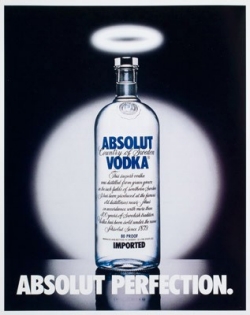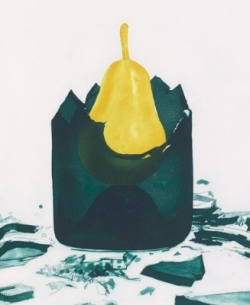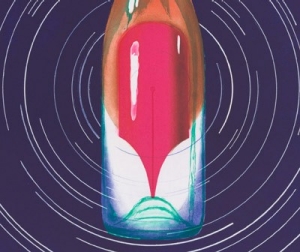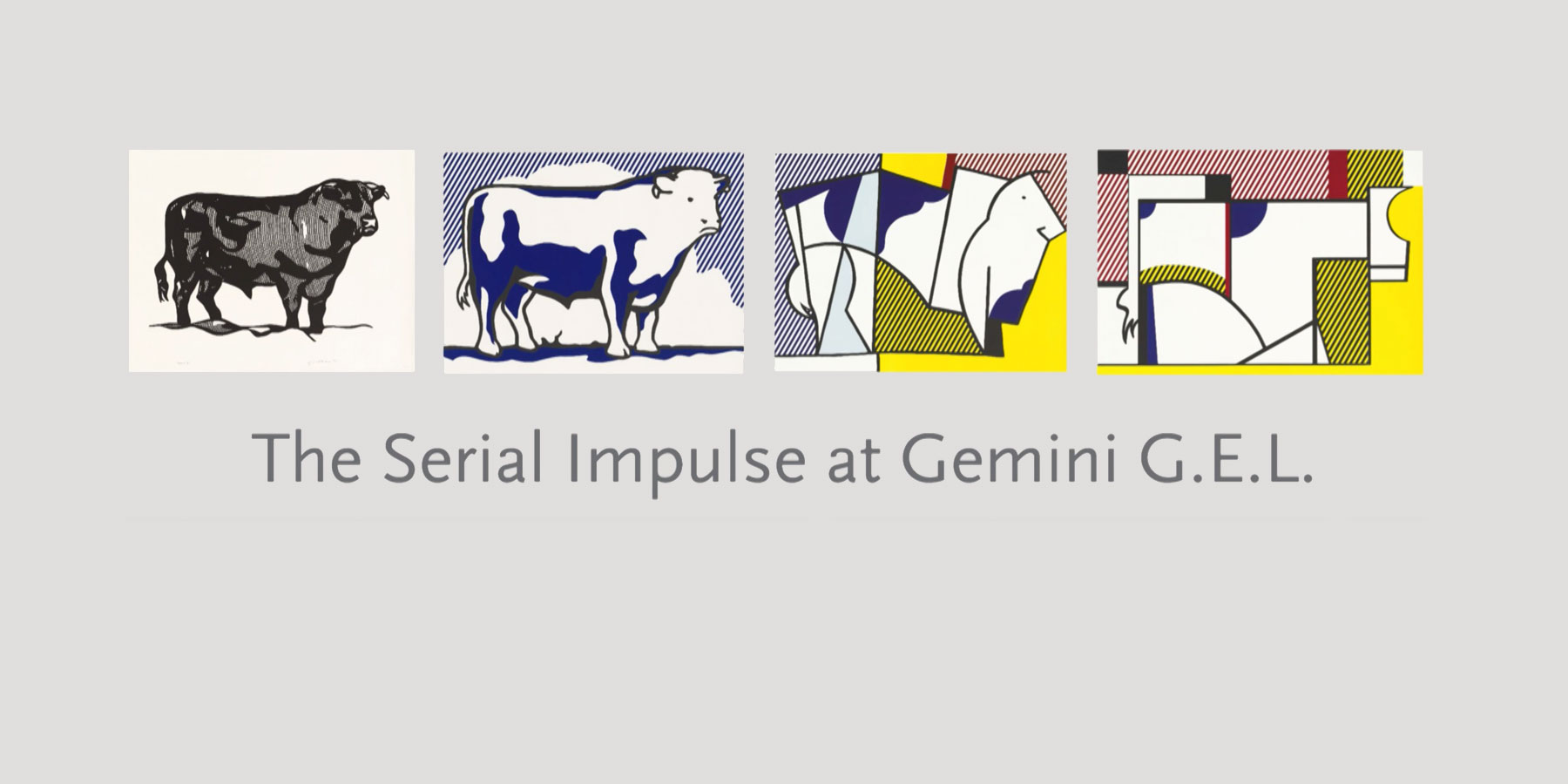According to James Rosenquist (American, born 1933), this series addresses “the trap of trying to extract . . . wishes and desires from a bottle.” Typically for the artist, the prints are rife with references to fine art: he quotes Leonardo da Vinci’s Mona Lisa, and recalls Pablo Picasso’s early still life collages and Rene Magritte’s painted bottles. The Glass Wishes also jibe with popular culture: the totemic bottles and serial format rhyme with an iconic series of Absolut vodka advertisements first published in 1980. The allure of alcohol marketing is both invoked and critiqued in Rosenquist’s prints, which juxtapose images of beauty and purity with motifs of violence and loss. Krapp’s Banana and On Stage, for instance, hint at a before-and-after scenario in which something precious, sensual, and vulnerable has emerged, but at destructive cost. This pair refers to Samuel Beckett’s absurdist screenplay Krapp’s Last Tape, in which the protagonist, Krapp, laments a life wasted drinking and, of all things, eating bananas. Instead of something like “Absolut Perfection,” Rosenquist’s series would appear to offer the more sober assessment, “Absolute Krapp.”
James Rosenquist, The Glass Wishes, 1981–1982

“Absolut Perfection,” Absolut Vodka advertisement, 1980. From Richard W. Lewis, Absolut Book: The Absolut Vodka Advertising Story (North Clarendon, VT, 1996)

James Rosenquist, Appearance (detail), 1981, aquatint, drypoint, and etching, Gift of Gemini G.E.L. and the Artist, 1988. © James Rosenquist and Gemini G.E.L./VAGA, New York, NY (click on detail for full image)
As one of the pioneers of pop art, Rosenquist has regularly drawn on advertisements for his imagery. He has recalled painting dozens of Schenley whiskey bottles during his early career as a commercial sign painter, an experience that may have fueled his interest in the form and suggestive power of the bottle. Rosenquist has also referred to his upbringing in a family of “drinking Swedes” and recalls accompanying his uncle to Alcoholics Anonymous meetings. “I heard all of these weird stories—tales of alcoholism. So, it was the bottle intact and then the bottle broken.” This language parallels the imagery of The Glass Wishes, particularly in Appearance, in which a golden pear nestles amidst the shards of a shattered bottle. Similarly, the skull in Leaky Neck (a pun on decapitation, conflating the neck of a bottle and a body) is a traditional symbol of mortality; the print reads as a memento mori, a reminder that life is fleeting and that everyone must die.

James Rosenquist, While the Earth Revolves at Night (detail), 1982, aquatint, Gift of Gemini G.E.L. and the Artist, 1988. © James Rosenquist and Gemini G.E.L./VAGA, New York, NY (click on detail for full image)
Rosenquist has said that he conceived of a number of the prints in The Glass Wishes in pairs. For example, While the Earth Revolves at Night and Plume are juxtaposed in a sketch the artist made of ideas for this series. The pair seems to address the romantic myth of the artist, which is tied to an image of hard-drinking excess and creative epiphany. Rosenquist has noted that the erotically charged red-lacquered fingernail with a fountain pen nib suggests “the author [who] writes all night.” In Plume, the pink-tinged quill suggests a fragile and beautiful idea born of the booze-fueled night, or, as Rosenquist has put it, “the bottle is broken; the idea appears.”














